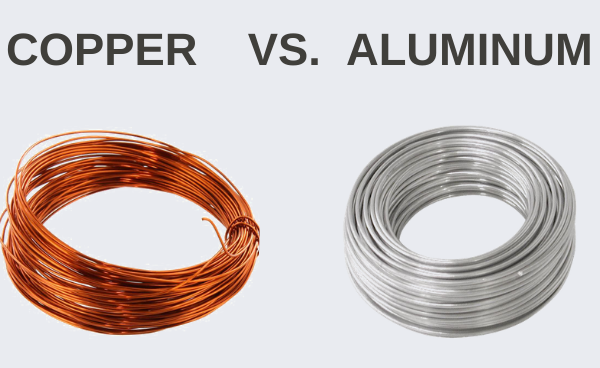Can aluminum replace a large amount of copper demand under the global energy transition?
With the global energy transformation, can aluminum replace a large amount of newly increased demand for copper? At present, many companies and industry scholars are exploring how to better “replace copper with aluminum”, and propose that adjusting the molecular structure of aluminum can improve its conductivity .
Due to its excellent electrical conductivity, thermal conductivity and ductility, copper is widely used in various industries, especially in electric power, construction, home appliances, transportation and other industries. But demand for copper is soaring as the world shifts to greener energy sources, such as electric vehicles and renewable energy, and the source of supply has become increasingly problematic. An electric car, for example, uses roughly four times as much copper as a conventional car, and electrical components used in renewable energy power plants and the wires that connect them to the grid require even greater amounts of copper. With the soaring price of copper in recent years, some analysts predict that the gap of copper will become bigger and bigger. Some industry analysts even called copper the “new oil”. The market is facing a tight supply of copper, which is crucial in decarbonizing and using renewable energy, which could push copper prices up more than 60% within four years. In contrast, aluminum is the most abundant metal element in the earth’s crust, and its reserves are about a thousand times that of copper. Since aluminum is much lighter than copper, it is more economical and convenient to mine. In recent years, some companies have used aluminum to replace rare earth metals through technological innovation. Manufacturers of everything from electricity to air conditioning to auto parts have saved hundreds of millions of dollars by switching to aluminum instead of copper. In addition, high-voltage wires can achieve longer distances by using economical and lightweight aluminum wires.
However, some market analysts said that this “substituting aluminum for copper” has slowed down. In broader electrical applications, aluminum’s electrical conductivity is the main limitation, with only two-thirds the conductivity of copper. Already, researchers are working to improve aluminum’s conductivity, making it more marketable than copper. The researchers believe that changing the structure of the metal and introducing suitable additives can indeed affect the conductivity of the metal. The experimental technique, if fully realized, could lead to superconducting aluminum, which could play a role in markets beyond power lines, transforming cars, electronics and power grids.
If you can make aluminum more conductive, even 80% or 90% as conductive as copper, aluminum can replace copper, which will bring about a huge shift. Because such aluminum is more conductive, lighter, cheaper and more abundant. With the same conductivity as copper, lighter aluminum wires could be used to design lighter motors and other electrical components, allowing cars to travel longer distances. Anything that runs on electricity can be made more efficient, from car electronics to energy production to delivering energy through the grid to your home to recharge car batteries.
Reinventing the two-century-old process of making aluminum is worth it, researchers say. In the future, they will use the new aluminum alloy to make wires, as well as rods, sheets, etc., and pass a series of tests to ensure that they are more conductive and strong and flexible enough for industrial use. If those tests pass, the team says it will work with manufacturers to produce more of the aluminum alloy.
Post time: Feb-13-2023







